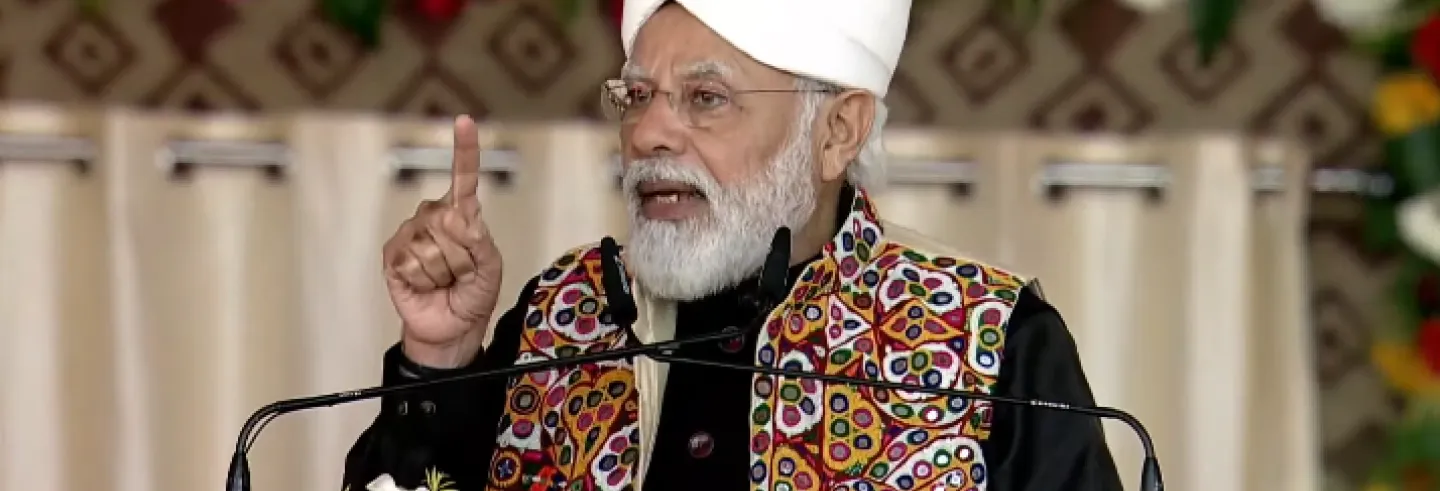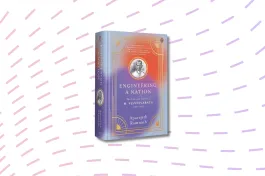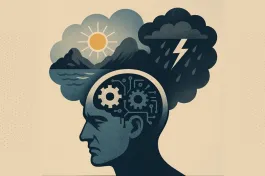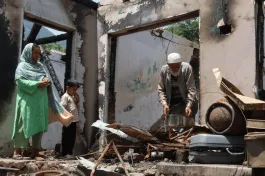The approaching assembly elections in Uttar Pradesh will be keenly watched as a curtain-raiser for the 2024 national election. Beyond the question of who would govern the country’s most populous and politically salient state, the results will catalyse — or frustrate — an emerging coalition against the Bharatiya Janata Party, being forged by regional parties across the country.
The context in which the state elections will be fought is the waning of identity politics and the rising desire for rapid development, particularly among the disadvantaged and poorer sections. This development underlies the marginalisation of the Samajwadi Party (SP) and the Bahujan Samaj Party (BSP), and the phenomenon of several Backward castes and Dalits searching for a party that can provide them material benefits. The BJP’s promises of development and cultural inclusion, and its deft use of hyper-nationalism, communal mobilisation, and social media, helps explain why a section of Dalits and Backward castes have moved towards the party.
This new form of inclusionary politics contributed to the revival of the BJP under Narendra Modi and the party’s massive electoral victory in 2014 and subsequent state and general elections. Caste remains important, but a new relationship is visible between caste, development, and electoral politics, rendering political alignments fluid and politics unpredictable.
The BJP is likely to return to power in 2022, though opinion polls suggest a significant reduction in the number of seats that the saffron party will win.
It is against this backdrop two significant issues will play out. First, there is a perception of a weakening of the Yogi Adityanath government, rooted in its failures in governance. Second, the BJP will have to grapple with the repercussions of the successful protests by farmers in western UP against the three farm laws. While the laws were enacted by the union government, the fact that Prime Minister Narendra Modi is a key campaigner in state elections will weigh on the party’s prospects. These issues will test the preparedness and strategies of both the BJP and the opposition parties.
Adityanath’s declining image
The BJP is likely to return to power in 2022, though opinion polls suggest a significant reduction in the number of seats that the saffron party will win. The lower estimate is most likely due to the declining image of Yogi Adityanath and his regime.
The immediate reason for such an impression is the mishandling of the second Covid-19 wave in March and April, when cases and deaths soared due to lack of adequate healthcare, low rates of vaccination, and a profound lack of reliable information. Widely circulated images of bodies floating in the Ganga and of mass graves contributed to a sense of “fear and death” stalking the state, especially its hinterland (Kashyap 2021). The government’s image has also taken a hit from the poor law and order situation, high crime rates, rising atrocities against Dalits and minorities, sexual assaults on women, bad roads, price rise, and the economic slowdown leading to lack of jobs and poverty. Journalists whose reportage is critical of the government have been arrested or otherwise harassed by the state’s police.
Equally important, there have been differences among BJP leaders in UP over Adityanath’s style of governance. Many are bitter over his inaccessibility and their exclusion from the state’s governance. Several leaders, particularly those who are Brahmins, claim a ‘Thakurisation’ of the government, with the top administration staffed largely by members of Adityanath’s caste. They view Adityanath as a ‘Rajput despot’ more than a BJP leader. (The Rajya Sabha MP Sanjay Singh, of the Aam Aadmi Party, has claimed that in 39 districts, district magistrates and police superintendents belonged to the chief minister’s caste. The state has 75 districts in all.)
The perception that Modi and Adityanath are in opposing camps, that Modi would benefit without Adityanath in power […] could harm the party.
Alongside, there is unease over excessive use of police force against ‘Brahmin criminals’ like the extrajudicial killing of Vikas Dubey, a well-connected mafiosi who was arrested for killing eight policemen deputed to apprehend him. (Official records show that 124 people were killed in dubious police ‘encounters’ between March 2017 and August 2020; of whom 45 were from minority communities, 11 were Brahmins, eight Yadavs, and 58 were from Thakur, Vaishya, Backward and Scheduled Caste or Scheduled Tribe communities.
Adityanath faced a serious challenge earlier in the year when the top BJP leadership tried to oust him as chief minister. There were also attempts to force changes to Adityanath’s cabinet, most prominently to make A.K. Sharma, an experienced bureaucrat and Modi confidante, as deputy chief minister. With the Rashtriya Swayamsevak Sangh (RSS) supremo Mohan Bhagwat supporting Adityanath, these efforts failed; Modi and Home Minister Amit Shah had to call a truce.
The shelving of Modi’s plan to replace Adityanath, unlike the smooth ousters of chief ministers in Uttarakhand and Assam, was because of strong RSS support for Adityanath and as many leaders thought it inappropriate to make changes with elections close. But the perception that Modi and Adityanath are in opposing camps, that Modi would benefit without Adityanath in power in UP in 2024, has spread among the rank and file, which could harm the party in the elections.
The crisis in western UP
The success of the farmers, led by the Sanyukt Kisan Morch (SKM), in getting the three farm laws repealed and the government to agree to several other demands, could adversely impact the approaching elections. The rollback has arguably come too late. The protests have over time acquired a strong political character due to the perception among farmers that a dictatorial government is unwilling to listen to their demands and can use force against them.
Most recent amongst the flashpoints was the mowing down of eight protesters in UP’s Lakhimpur Kheri by vehicles linked to Ajay Mishra, a union minister and prominent BJP leader; an incident in October that remains a hot wire issue. Powerful Jat farmers, led by Rakesh Tikait, (who has described the BJP government as “inhumane, barbaric and fascist”) had earlier in the year resolved to campaign against the BJP in upcoming assembly elections, taking up as a slogan: “Defeat BJP: Mission UP”. As late as November, at a kisan mahapanchayat at Lucknow, the SKM exhorted farmers to continue their protests and “teach the BJP a lesson” in the elections.
Some commentators have termed the SP-RLD alliance a “game-changer” for its potential to revive the erstwhile social coalition of the Muslim and Jat communities.
There is deep distrust and anger among farmers against BJP leaders who tarred them as “Khalistani,” “andolanjeevi,” “parjeevi,” or“anti-national”; the death of over 700 agitators; and the government using its parliamentary majority to push through the laws without consultation. Farmers feel that the rollback was dictated by fear of losses in the UP election, rather than any sympathy for farmers or as a well-thought-out policy step. (While announcing the rollback, Modi continued to support the laws, claiming it was done only because the government could not “convince” farmers.) The rollback has come when the electoral campaign is in full swing and opposition parties have succeeded in foregrounding issues of misgovernance, such as unemployment, rising inflation, farm wages, and crimes against women and Dalits.
The Samajwadi Party, under Akhilesh Yadav, has sensed an opportunity. In his well-attended political rallies, Yadav aggressively highlights the failings of the Adityanth government. To shed the image of the SP as a Muslim-Yadav party and to strengthen its social and regional base, Yadav is attempting an anti-BJP front of smaller OBC and Dalit parties: the Jayant Chaudhary-led Rashtriya Lok Dal (RLD) in western UP, Om Prakash Rajbhar’s Suheldev Bhartiya Samaj Party in eastern UP, Keshav Dev Maurya’s Mahan Dal in central UP, the Apna Dal (K) in eastern UP, and Sanjay Chauhan’s Janwadi Party (Socialist); many of whom have earlier supported the BJP. He has also managed to attract influential leaders from the BSP and the Congress. The Trinamool Congress, which rules West Bengal, has offered support against the BJP.
The most-watched alliance is that between SP and RLD, traditionally a party of the Jats of western UP. Some commentators have termed the SP-RLD alliance a “game-changer” for its potential to revive the erstwhile social coalition of the Muslim and Jat communities built by Charan Singh, a towering farm leader of the 70s and a former prime minister. The RLD has also tried to gain the support of the Dalit community through campaigns such as the Dalit Nyaya Yatras. There are reports that Chandrashekhar Azad, a firebrand Dalit activist with a considerable following in western UP, could join or support the SP-RLD coalition. This would strengthen the alliance against the BJP and affect the fortunes of the BSP in western UP.
“People are scared that if the SP-RLD alliance wins, Jats and Muslims will be in a dominating position. Only the BJP can protect us from them.”
These developments reflect the changes that the farmers’ protests have introduced in political equations in western UP. In the 2014 national elections, following the Muzaffarnagar riots and the BJP’s communal campaigns that broke down the traditional closeness between Jats and Muslim agriculturalists; the Jats abandoned the RLD and voted in large numbers for the BJP. In 2017, the BJP won 78 of the 100-odd seats of western UP spread across 20 districts, the SP only 16. If this time along, farmers vote in keeping with their class and occupational identity and interests, and not as ‘Hindus’ it could dent the fortunes of the BJP in western UP. (At the Muzaffarnagar mahapanchayat in September, Rakesh Tikait raised simultaneous slogans of “Har Har Mahadev” and “Allahu Akbar” reminiscent of the communally harmonious outlook of Mahendra Tikait – Rakesh’s father and a celebrated leader of the Jat farmers.)
Yet, it is important to recall that farmers have repeatedly expressed their discontent against the BJP ahead of an election, only to ultimately vote for the party. They did so before elections in 2017 and 2019 but ultimately backed the BJP despite the pains of demonetisation and the deepening of the agrarian crisis. Jat-Muslim unity could lead to a ‘reverse polarisation’ by smaller Hindu castes like the Tyagis, Sainis, Gujjars, Lohaars, Kahaars, and Kanchis against the SP-RLD alliance. These communities were not very active in the farmers’ agitation and are wary of Jats and Muslims. As a schoolteacher belonging to one of the smaller communities in western UP’s Shamli put it: “People are scared that if the SP-RLD alliance wins, Jats and Muslims will be in a dominating position. Only the BJP can protect us from them.”
The coming elections thus point to a bipolar contest between the SP and the BJP, and not the four-cornered contests witnessed in earlier elections. The other two opposition parties have been uninspiring. The BSP, despite facing an existential crisis, sticks to a lacklustre campaign that has not moved beyond trying to hold together a tenuous Brahmin-Dalit alliance. The Congress lacks organisational strength and seems to be aiming more at the 2024 general elections, notwithstanding a series of well-attended rallies, attractive electoral promises, and talk of Priyanka Gandhi Vadra as a chief ministerial candidate.
Communalism to the fore
A worried BJP has rallied around Adityanath in an effort to portray a united party. Party leaders have lauded Adityanath for being a tough and capable administrator — encapsulated in the catchy election slogan “UP + Yogi = Upyogi” (“beneficial") — and highlighted his developmental performance. Modi has inaugurated several infrastructure projects in the state. He has said that with a “double-engine” — the same party in power in the state and the centre — BJP rule would boost the economy (Bhatnagar 2021). Similarly, Adityanath has turned his focus towards schemes for free rations and cash transfers to the poor, both introduced jointly by the union and state government.
Despite the momentum building up behind the SP, the BJP can only be challenged by a united opposition, which is nowhere in sight.
However, as in the past, caste and communal mobilisations are being deployed. Adityanath’s campaign speeches use dog-whistle terms like “abbajan” and “chachajan” and the chief minister has claimed that Akhilesh Yadav and Asaduddin Owaisi — the AIMIM chief who is looking to spread his Muslim-focused party’s wings — are spreading hatred in a state that was riot-free during the past five years (Siddiqui 2021). Adityanath has claimed that Congress planted the "seeds of terrorism in Kashmir" in the form of Article 370 and that the SP “withdrew cases against terrorists who attacked Ramjanmbhoomi.”
Such inflammatory speech will only increase as we move closer to the elections, with a worried BJP relying on a strategy of Hindu-Muslim communal polarisation. Adityanath’s recent visit to Kairana in Shamli district was to revive the bogey of “palayan”, the debunked claim of an exodus by Hindu families due to so-called ‘Muslim terrorism’, a claim which helped the BJP win in 2017.
The party is also redoubling its efforts to get the Jats and other smaller communities in western UP behind it. To pacify the Jats, Modi laid the foundation stone of a university named after Raja Mahendra Pratap Singh, a Jat icon and anti-colonial revolutionary. Adityanath unveiled a statue of a 9th century Gujjar king, Mihir Bhoj, to garner support from the Gujjars. Top BJP leaders are on tours of the western districts, the party has planned a series of yatras across the state, and the prime minister will lay foundation stones for several projects.
The battle ahead
A fierce battle is in the offing in 2022. The BJP has strong leadership and a formidable organisation and electoral machinery on the ground. Opposition parties have not been able to question its hegemony. Despite the momentum building up behind the SP, the BJP can only be challenged by a united opposition, which is nowhere in sight. (In 2019 even the SP-BSP alliance failed to break into its citadel.)
If the opposition does make a dent in UP, it could quicken the efforts of regional parties to come together for the larger battle in 2024.
This election season, though, the BJP is on the back foot, due to the unrest among farmers, the failings of the Adityanath government, divisions within the party, and the economic downturn and distress caused by Covid-19.
There will be a political and communal blitzkrieg closer to the election by party functionaries from the prime minister downwards — signs of which are already there. But as the BJP’s failure to win West Bengal despite a similar campaign suggests that this strategy may not automatically be as effective as in the past. If the opposition does make a dent in UP, it could quicken the efforts of regional parties to come together for the larger battle in 2024 and mark the beginning of a new anti-BJP politics.
There is much at stake in the UP election for both the BJP and the opposition.









